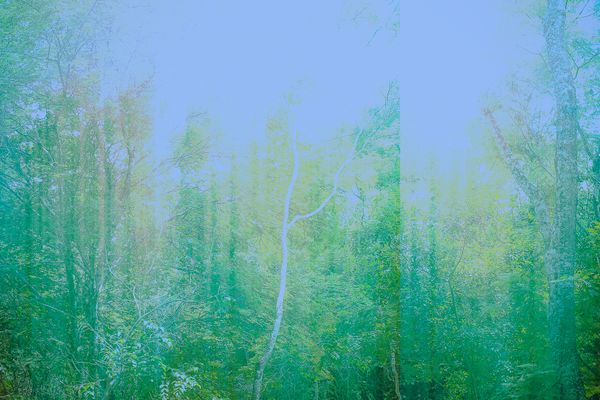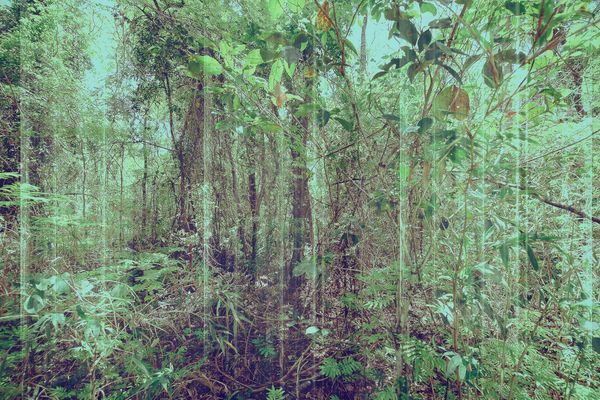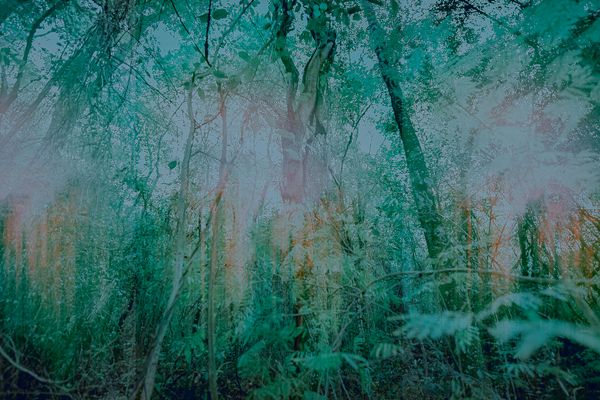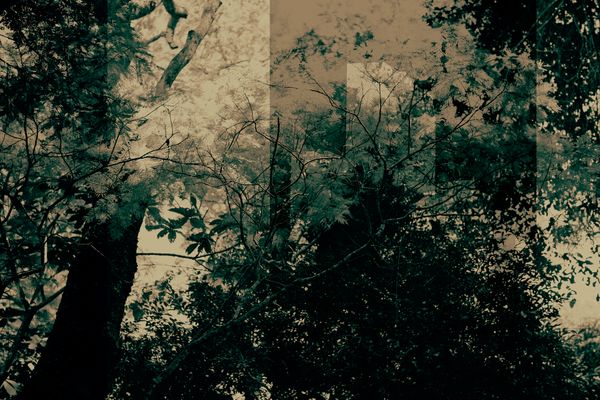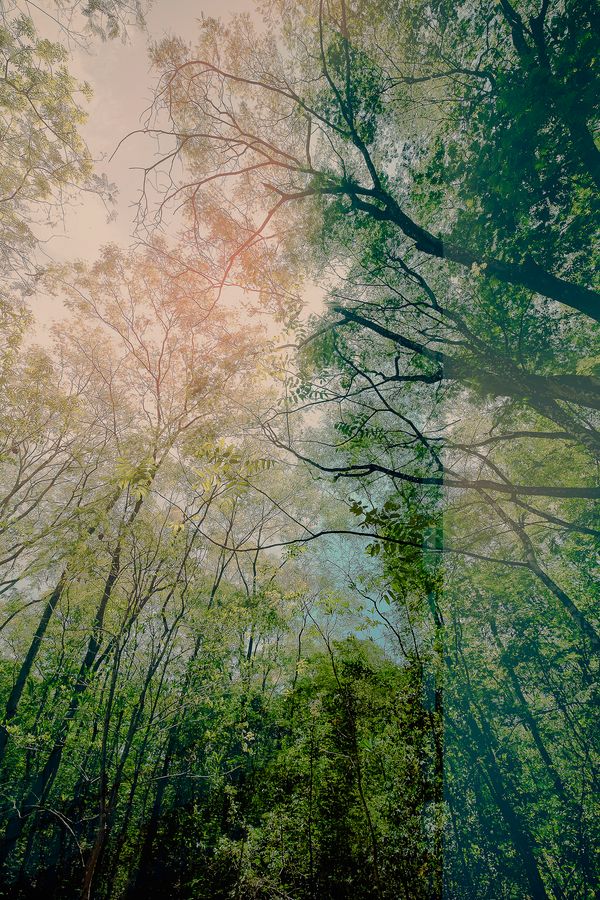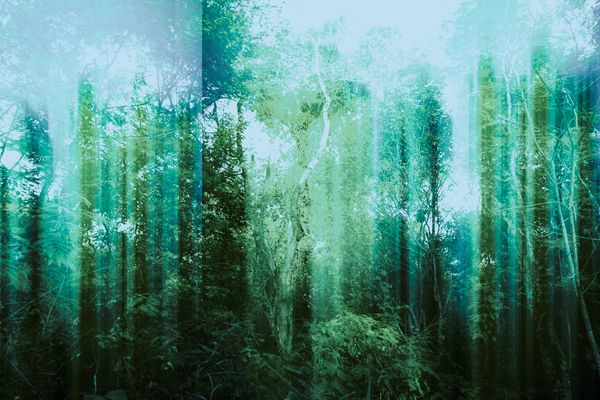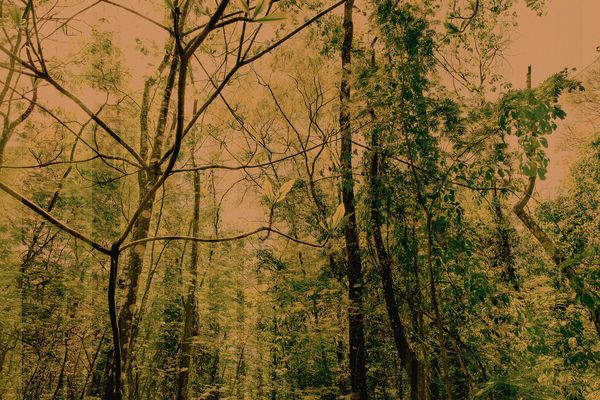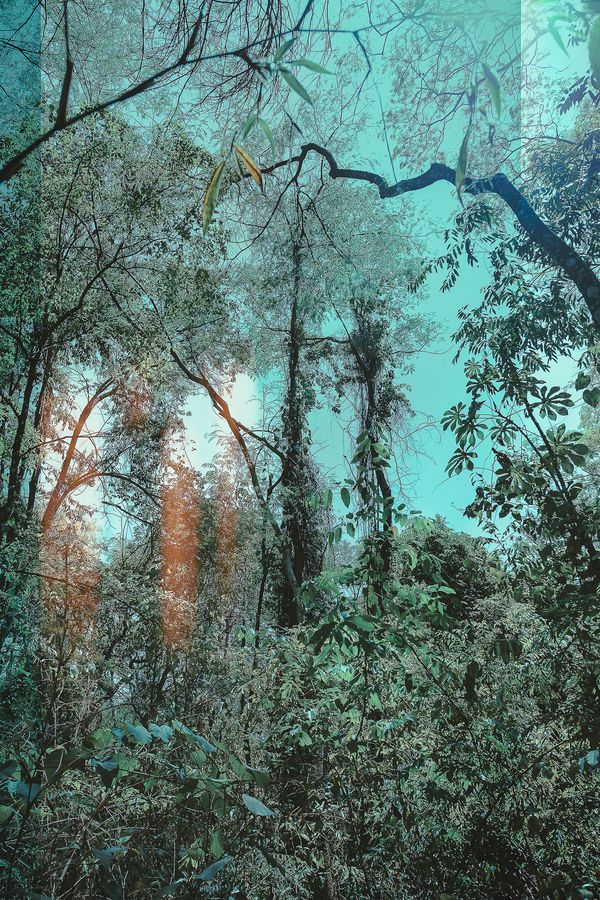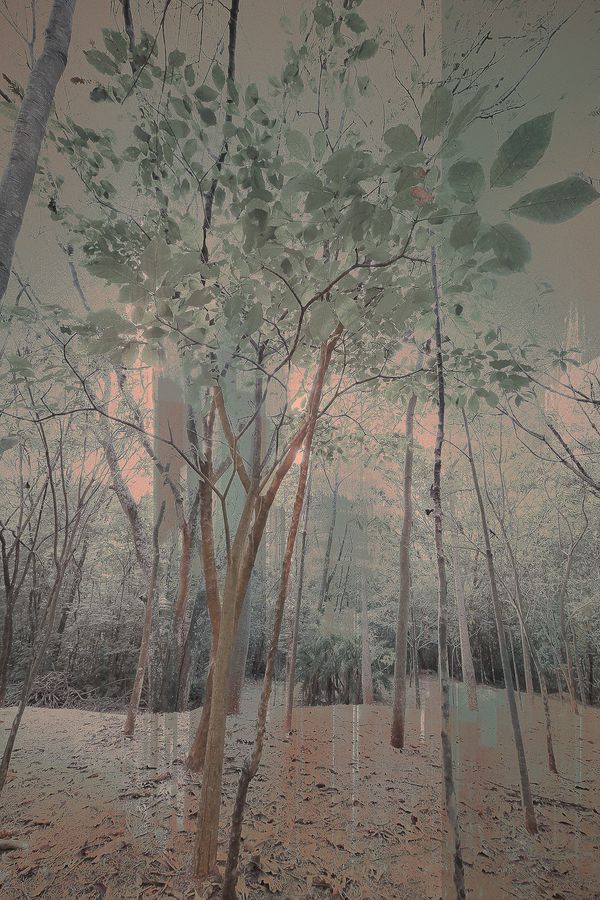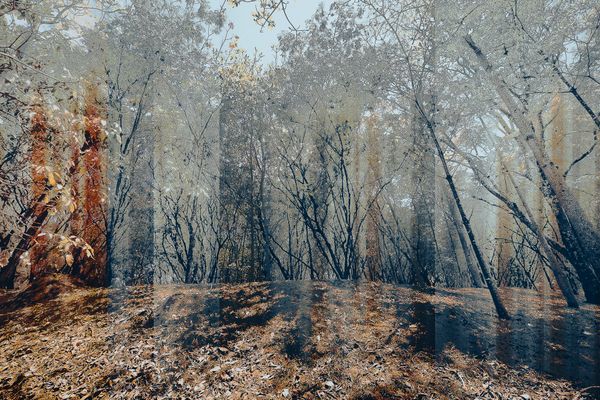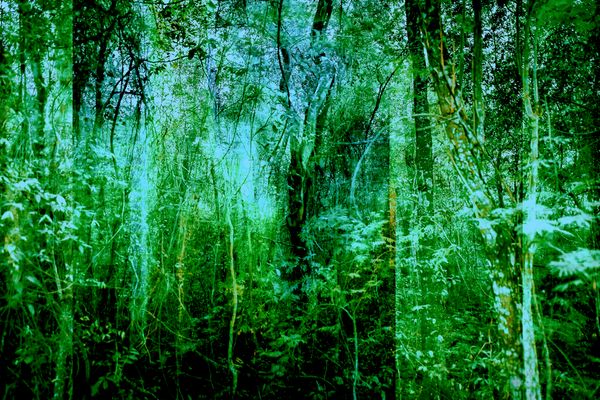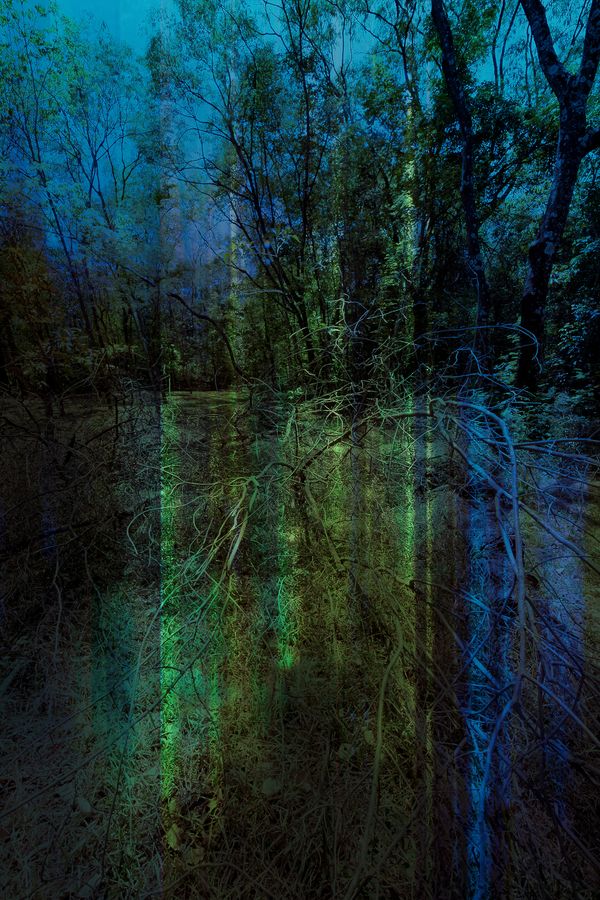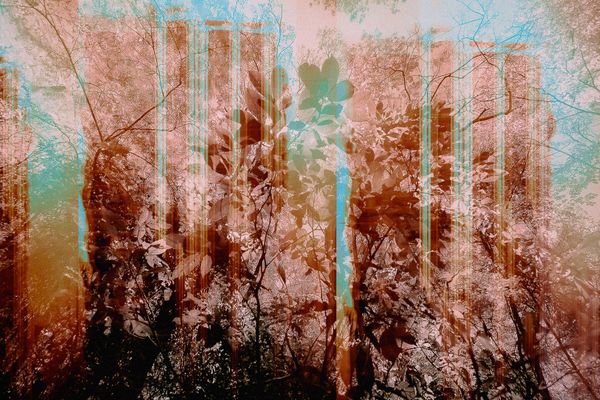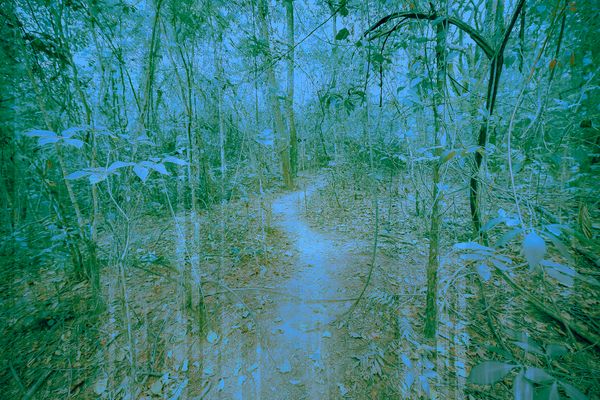Invisible Cities
-
Dates2023 - Ongoing
-
Author
- Topics Awards, Fine Art, Nature & Environment
In the Invisible Cities series, photographs of a native forest symbolically address the role of cities in the context of climate change.
In the Invisible Cities series, photographs of a native forest symbolically address the role of cities in the context of climate change.
The ongoing process of deforestation and urban expansion is one of the relevant causes of the climate emergency. Invisible Cities, however, arises from a circumstance in which the opposite occurred. In Brasília, an icon of modernist urbanism, a demand from the environmental movement became victorious. A large area of intact nature, where the construction of almost thirty buildings had been authorized since 1960, was transformed into a park. In this case, nature won over the city.
All the photographs of nature were taken in this park: Parque Olhos d’Água (Water Springs Park). Superimposed lines, shapes or shadows, some more defined, others less so, suggest an idea of urban intervention and constitute a kind of fable. As occurs in the well-known book of the same name by Italo Calvino, the city ceases to be a geographical concept and becomes a metaphorical sign.
From a local circumstance, universal concerns are alluded to. Is the city a threat? Are nature and culture in opposition or can they be harmonized? How can we reconcile the social organization of the human species with the preservation of natural spaces?
